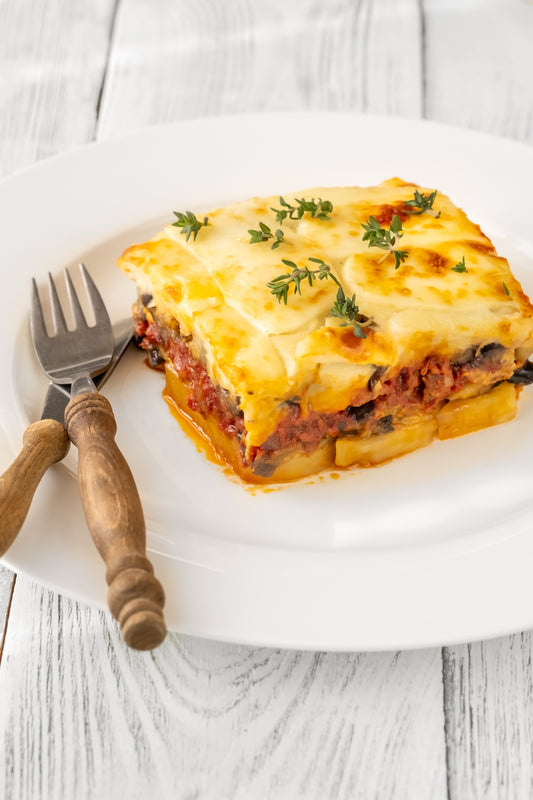
Saffron Jalebi
Share
Saffron Jalebi Recipe

Jalebi: A Sweet Delight from India
Jalebi is a beloved sweet treat that originates from India and holds a special place in the hearts and palates of people across the country. This dessert, known for its intricate spiral shape and vibrant orange hue, is a staple at festive occasions, weddings, and celebrations.
History and Origins: The history of jalebi dates back centuries, with its roots tracing back to the Indian subcontinent. The word "jalebi" is believed to have Persian origins, and the dish has evolved over time to become an iconic Indian dessert.
Preparation and Culinary Art: Jalebi is made from a simple batter consisting of all-purpose flour, chickpea flour (besan), and a leavening agent like baking powder. The batter is left to ferment, which imparts a unique tanginess to the final product. Saffron and cardamom are often added to the batter for fragrance and flavor.
The process of making jalebi involves skillfully piping the fermented batter into hot oil or ghee, creating intricate patterns that fry to a beautiful golden color. Once fried, the jalebis are immediately dipped into a saffron-infused sugar syrup, allowing them to absorb the sweet essence.
Symbolism and Significance: Beyond its culinary appeal, jalebi holds cultural and social significance in India. The spiral shape of jalebi symbolizes eternity, continuity, and the cyclical nature of life. This symbolism is often reflected in Indian festivals and rituals.
Celebration and Sharing: Jalebi is a treat that brings people together. During festivals like Diwali and Eid, it graces the tables of homes across the country, signifying the joy and sweetness of the occasion. It's also a popular street food, with vendors expertly crafting jalebis in large pans of bubbling oil, captivating both locals and tourists alike.
Modern Variations: While the traditional jalebi remains a timeless favorite, modern variations have emerged. Some creative renditions include chocolate-filled jalebis, flavored syrups, and even jalebi-inspired desserts like ice creams and cakes.
In conclusion, jalebi is more than just a dessert; it's a cultural treasure that exemplifies the artistry and sweetness of Indian culinary traditions. Its intricate preparation and joyful symbolism make it a cherished indulgence that delights the senses and fosters a sense of togetherness.
Ingredients:
For the batter:
- 1 cup all-purpose flour
- 2 tablespoons chickpea flour
- ½ teaspoon baking powder
- 1 cup warm water
- A pinch of saffron strands
- ½ teaspoon cardamom powder
- Oil or ghee for frying
For the sugar syrup:
- 1 cup sugar
- ½ cup water
- A few saffron strands
- ½ teaspoon cardamom powder
- 1 teaspoon lemon juice
Instructions:
Preparing the Batter:
-
In a mixing bowl, combine the all-purpose flour, chickpea flour, and baking powder.
-
Add the warm water gradually, stirring continuously to create a smooth batter. The batter should have a pouring consistency, similar to pancake batter.
-
If using saffron strands, soak them in a tablespoon of warm water for a few minutes. Add this saffron-infused water to the batter, along with cardamom powder. Mix well.
-
Cover the batter with a cloth and let it rest in a warm place for 1-2 hours. This fermentation helps develop the flavors and texture.
Preparing the Sugar Syrup:
-
In a saucepan, combine sugar and water to make the syrup.
-
Add saffron strands and bring the mixture to a boil. Let it simmer for 8-10 minutes until it forms a slightly sticky syrup.
-
Turn off the heat and add cardamom powder and lemon juice. Lemon juice prevents the syrup from crystallizing.
Frying the Jalebis:
-
Heat oil or ghee in a deep frying pan over medium heat.
-
Fill a squeeze bottle or a piping bag with the fermented batter.
-
When the oil is hot, carefully squeeze the batter into the hot oil to form concentric circles or pretzel-like shapes. Start from the center and work your way out.
-
Fry the jalebis until they are golden and crispy. Avoid overcrowding the pan; fry a few jalebis at a time.
-
Once fried, use a slotted spoon to remove the jalebis from the oil and immediately transfer them to the warm sugar syrup. Let them soak for a minute or so, then remove and place on a serving plate.
Serving:
Serve the jalebis warm or at room temperature. They are best enjoyed fresh when they are still slightly crispy on the outside and soaked in the sugar syrup. Jalebis are a popular Indian sweet and are often served during festivals, special occasions, or as a delightful treat.



